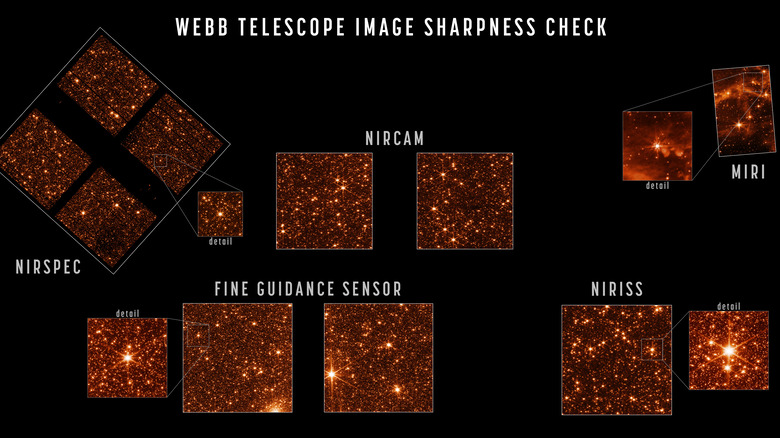James Webb Space Telescope Is Fully Focused At Last - Here's What That Means
It's an exciting day for space fans, as NASA confirms that the James Webb Space Telescope is now fully aligned. In a months-long process running since the telescope was launched in December 2021, the telescope's mirrors and instruments have been deployed and minutely adjusted to collect extremely sharp, accurate images. This allows the telescope to view distant objects like galaxies, so far away that looking at them is akin to looking at the universe when it was very young.
When the telescope launched, it had to be folded up to fit inside its rocket. En route to its final orbit around the sun, it gradually unfolded its hardware like its tennis-court-sized sunshield and its primary and secondary mirrors. Once all the hardware was unfolded, first its mirrors and then its instruments had to be aligned because as the telescope was gradually cooling in the coldness of space, its hardware inevitably moved during the unfolding and cooling process. To collect very accurate data, each of the 18 segments of its primary mirror had to be adjusted, then its four instruments tweaked, so everything was correctly in focus.
NASA released a series of images from Webb's four instruments and one guidance sensor showing everything sharp and accurate.
"These remarkable test images from a successfully aligned telescope demonstrate what people across countries and continents can achieve when there is a bold scientific vision to explore the universe," said the Webb optical telescope element manager at the NASA Goddard Space Flight Center, Lee Feinberg.
What's next for Webb
The telescope's instruments and capabilities have been reviewed and NASA has confirmed that Webb is now ready to begin commissioning its instruments. The performance of Webb so far is even better than the team hoped, with each instrument being declared "diffraction-limited" (via NASA). That means that all of the light entering the instrument is being recorded as well as it possibly could be, given the telescope's mirror size.
The mirrors will remain in their current positions for the rest of the telescope's life, barring minor small periodic adjustments. The next challenge is to get all four instruments ready for use in the commissioning phase, which involves checking all of the parts of each instrument like their lenses or filters. The telescope is expected to start collecting science data later this summer.
This means that some engineering team members' jobs on Webb are now complete. "With the completion of telescope alignment and half a lifetime's worth of effort, my role on the James Webb Space Telescope mission has come to an end," said Scott Acton, who works at Ball Aerospace as a Webb wavefront sensing and controls scientist. "These images have profoundly changed the way I see the universe. We are surrounded by a symphony of creation; there are galaxies everywhere! It is my hope that everyone in the world can see them."
